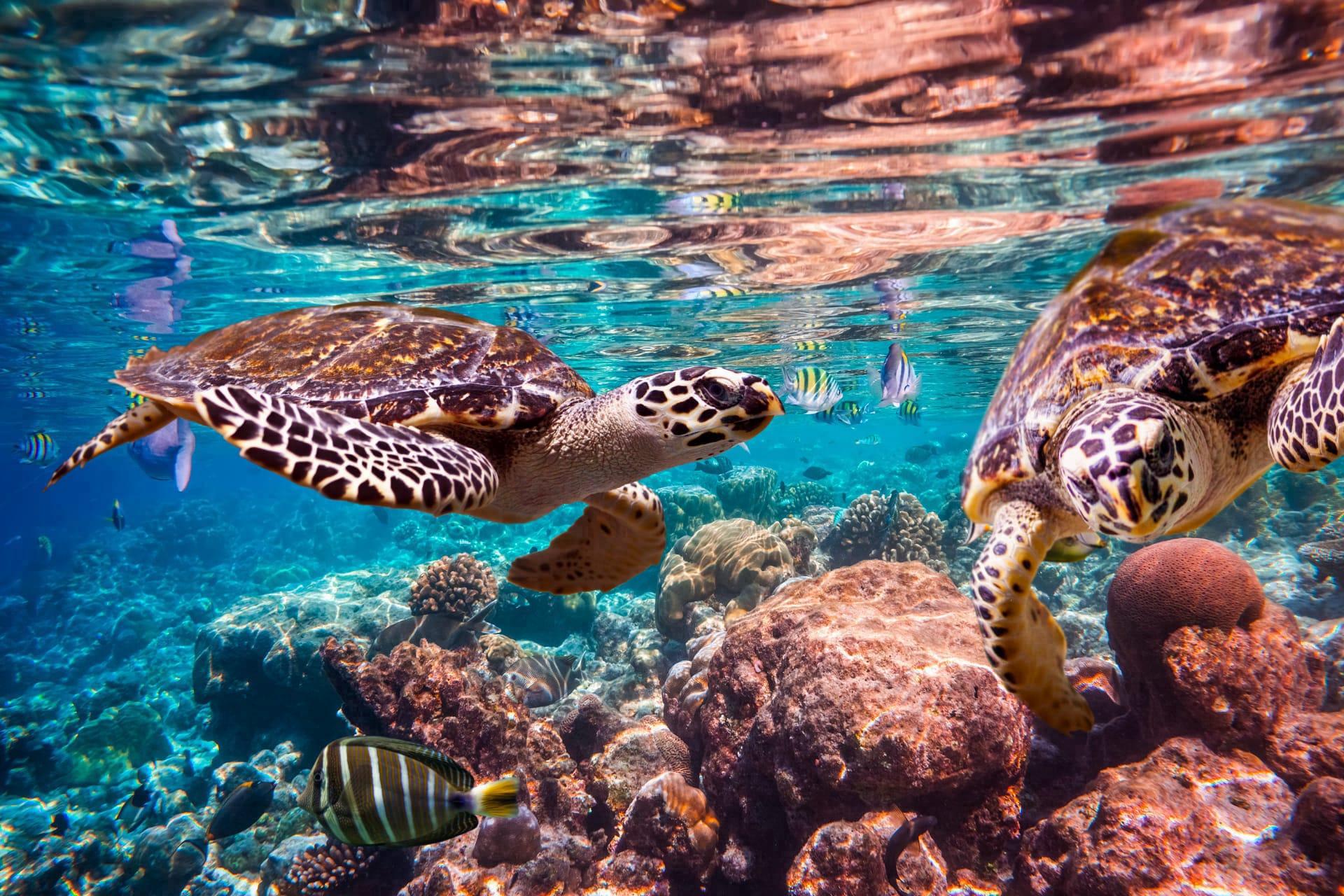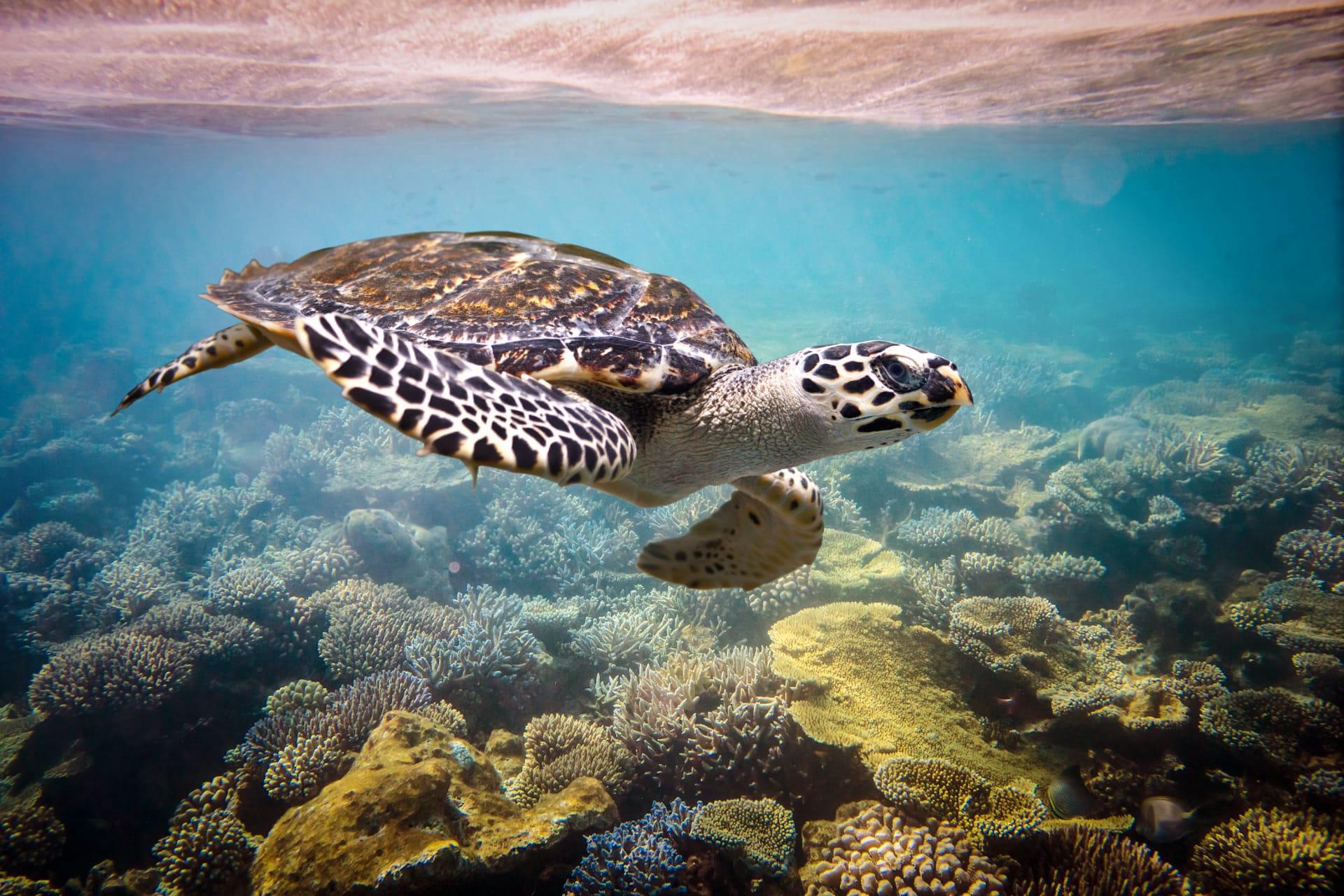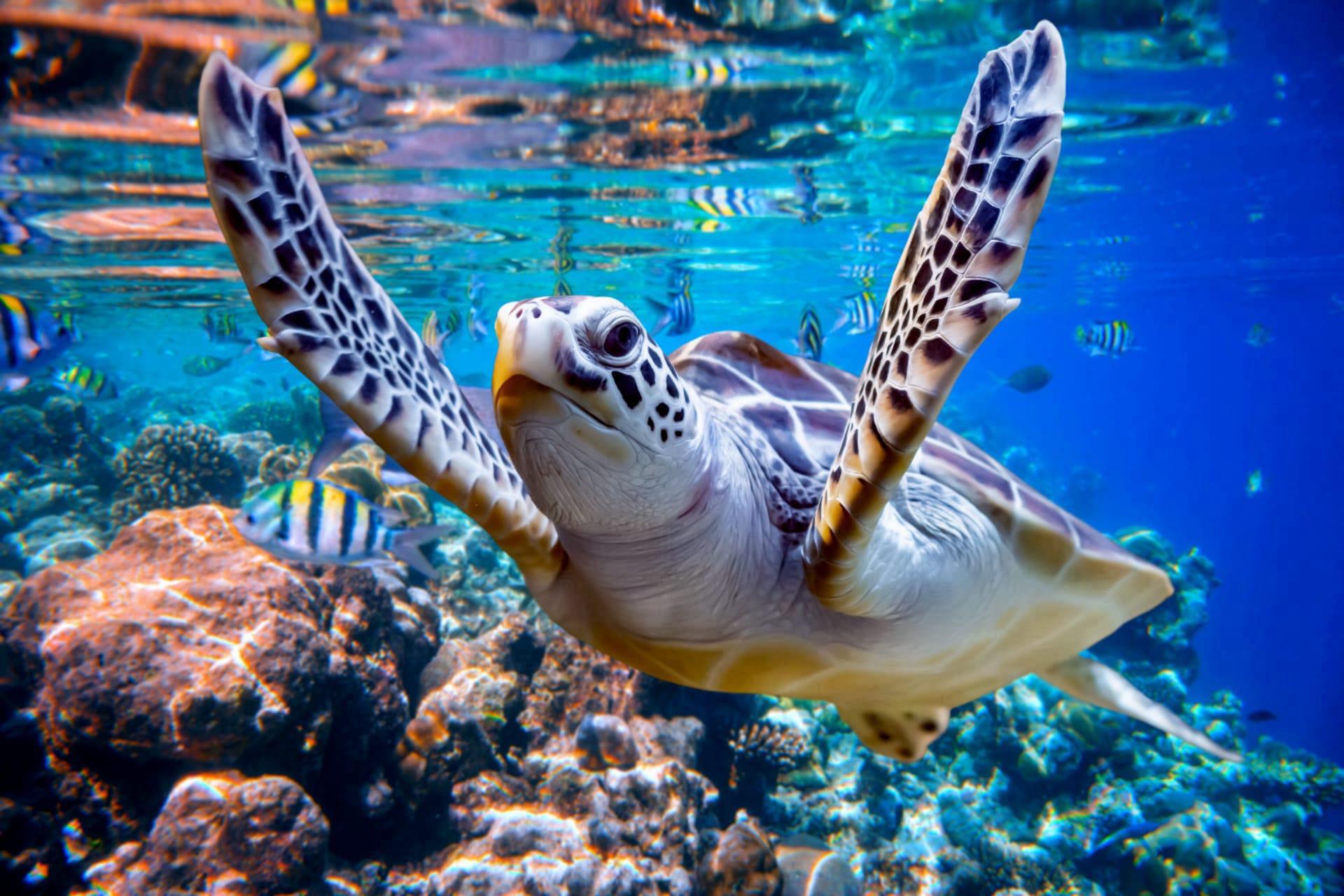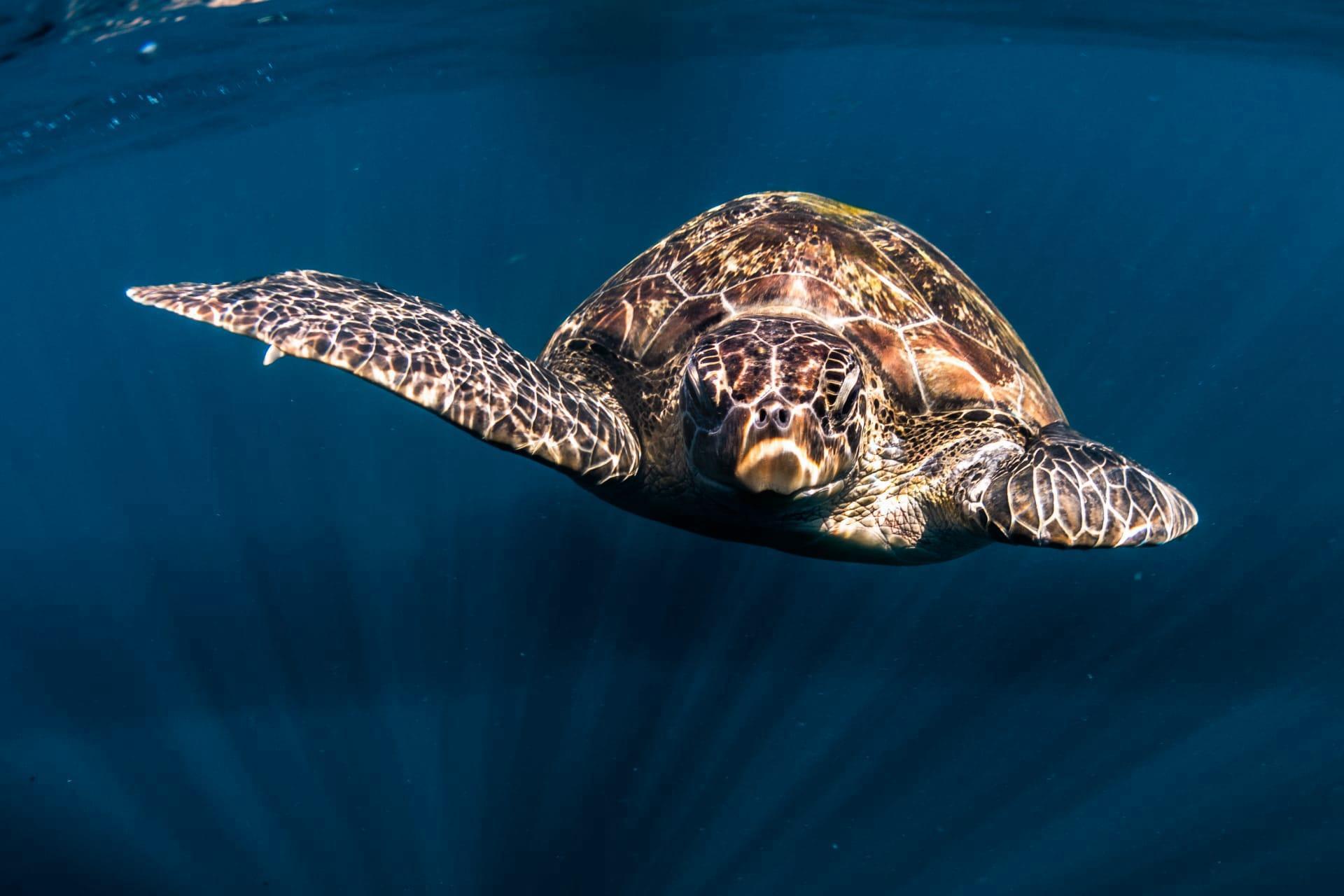Hawksbill Turtle
- Home /
- Mini Encyclopedia /
- Animal /
- Hawksbill Turtle
1
The Hawksbill Turtle, scientifically known as Eretmochelys imbricata, belongs to the family Cheloniidae. This species is unique due to its distinctive shell with overlapping scales, resembling the appearance of a bird's beak, which is where its name originates. The Hawksbill Turtle's shell exhibits a beautiful pattern, making it highly sought after but also contributing to its endangered status. These turtles typically grow to about 2 to 3 feet in length and can weigh between 100 to 150 pounds, with some exceptional individuals reaching up to 200 pounds.
Hawksbill Turtles are found predominantly in tropical regions of the world's oceans. They prefer shallow waters of lagoons and coral reefs but are also known to inhabit rocky areas, mangroves, oceanic islands, and even the high seas. Their distribution spans across the Atlantic, Pacific, and Indian Oceans, with notable populations in the Caribbean Sea, coastal regions of Southeast Asia, and parts of Australia. The Hawksbill Turtle's migratory patterns are influenced by their search for food, breeding grounds, and nesting sites, making them a widely dispersed species.

2
Question: Is it true that Hawksbill Turtles exclusively eat plants?
Answer: Contrary to popular belief, Hawksbill Turtles are not strict herbivores. They are omnivorous, with a diet predominantly composed of sponges, which constitutes about 70-95% of their intake. These turtles play a crucial role in controlling sponge populations on coral reefs. Besides sponges, they also consume small marine animals like jellyfish, sea anemones, and crustaceans, along with algae and various types of sea plants. This varied diet is vital for their survival, providing essential nutrients and helping maintain the health of the marine ecosystems they inhabit.

3
The survival strategy of Hawksbill Turtles is quite remarkable. One of their key strategies is their ability to blend into their surroundings, thanks to their uniquely patterned shell which provides excellent camouflage among coral reefs. This adaptation helps protect them from predators. Additionally, Hawksbill Turtles have a slow metabolism, which allows them to survive for long periods without food. This trait is particularly advantageous during their long migratory journeys.
Reproduction is another critical aspect of their survival strategy. Females return to the beaches where they were born, a phenomenon known as natal homing, to lay their eggs. They typically lay around 100 to 140 eggs per nest and can nest multiple times during a breeding season. This reproductive behavior ensures the continuity of their species, despite the many threats they face in the ocean.

4
In the ecosystem, Hawksbill Turtles hold a significant place, particularly in maintaining the health of coral reefs. By feeding on sponges, they prevent these organisms from outcompeting slow-growing corals, thus maintaining a balance in the reef ecosystem. Their feeding habits also help in creating space for fish and other marine organisms to inhabit the reefs.
The role of Hawksbill Turtles extends beyond ecological balance. Their nesting activities contribute to beach ecosystems. The eggs that don't hatch provide essential nutrients to the sand, which benefits vegetation. Also, the turtle hatchlings serve as a food source for a variety of predators, contributing to the food chain. Furthermore, these turtles are indicators of the health of marine environments, and their presence or absence can signal changes in the ecosystem's health.

5
Film: "Turtle: The Incredible Journey" (2009, United States). This documentary film follows the life cycle of a loggerhead turtle as it migrates across the Atlantic Ocean. While it focuses on the loggerhead species, it provides insights into the challenges faced by sea turtles, including the Hawksbill, highlighting their remarkable journey and the dangers they encounter.
Book: "Voyage of the Turtle: In Pursuit of the Earth's Last Dinosaur" (2006, United States) by Carl Safina. This book delves into the lives of sea turtles, including the Hawksbill. Safina combines science, adventure, and conservation, offering a compelling narrative about these ancient mariners of the sea.
Book: "Sea Turtles: An Extraordinary Natural History of Some Uncommon Turtles" (2006, United States) by Whit Gibbons and Anne R. Gibbons. This book provides an in-depth look into the world of sea turtles, covering various species, including the Hawksbill. It offers a mix of scientific facts, personal anecdotes, and conservation issues, making it an engaging read for anyone interested in these fascinating creatures.